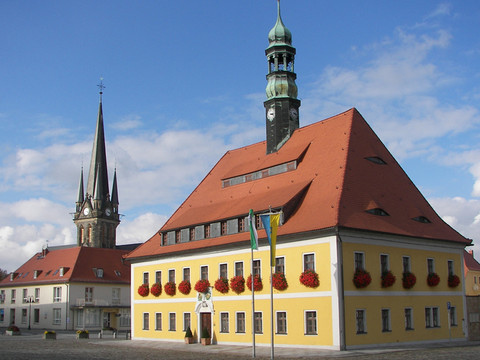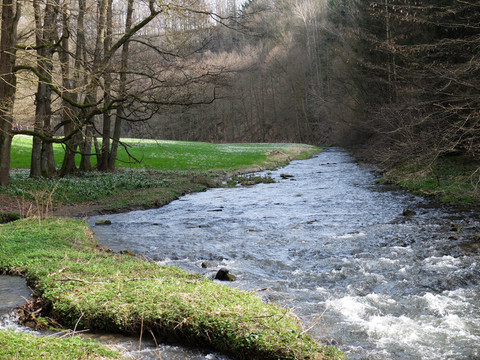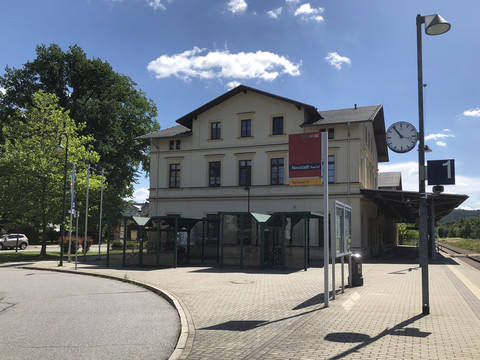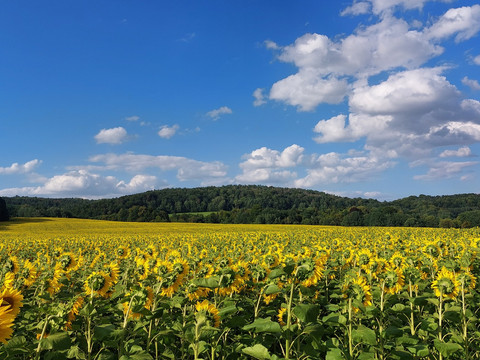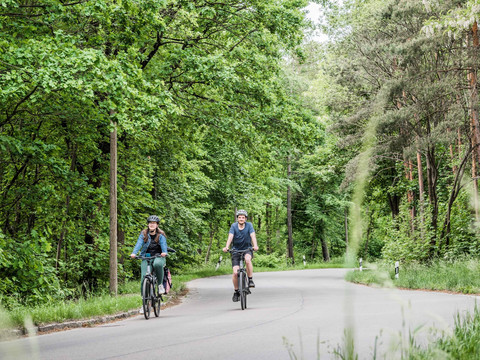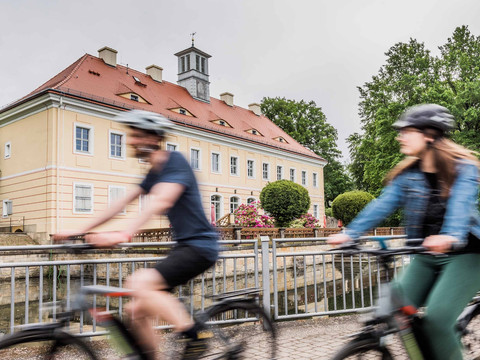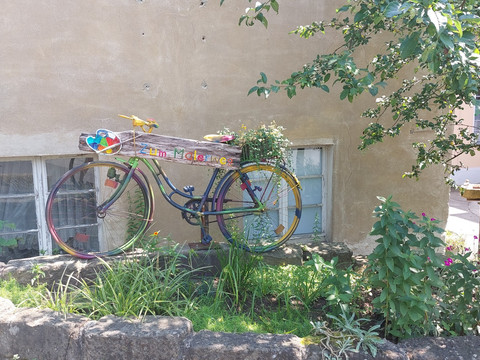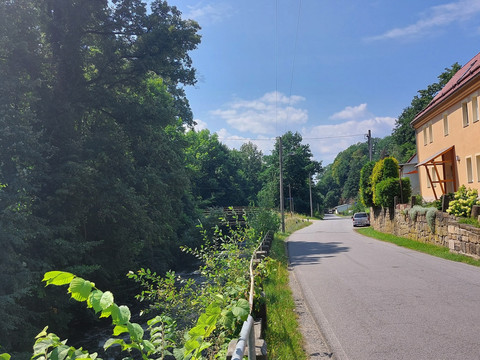The Mittelland Route, also known as the D4 Route, runs once across Germany - from Aachen to Zittau - and thus connects the country's western and eastern borders. One section also runs through Saxon Switzerland.
We cycle along the northern edge of Saxon Switzerland via country roads, but also old railway embankments and one or two unpaved paths.
A convenient starting point is the ferry Heidenau - Birkwitz, not far from the S-Bahn stops Heidenau and Heidenau Süd. First we cycle to Graupa and pass the Richard Wagner sites. Via Bonnewitz we reach Liebthal, where the path above the Wesenitz, parallel to the Malerweg, which runs here in the Liebthaler Grund, takes us to Mühlsdorf. Here there is a small rest area and a cute library by the roadside. Via Porschendorf we reach Dürrröhrsdorf-Dittersbach and first take a short ice cream break at the station.
Next destination: the basalt town of Stolpen, which can be seen from afar. If you like, you can take a detour into the town, visit the castle or drink a motivational drink of your choice. Shortly after Stolpen, we reach the Polenz valley, where we turn off and follow the Polenz river to Neustadt. Here we either take the train back to Pirna or continue towards Zittau.
